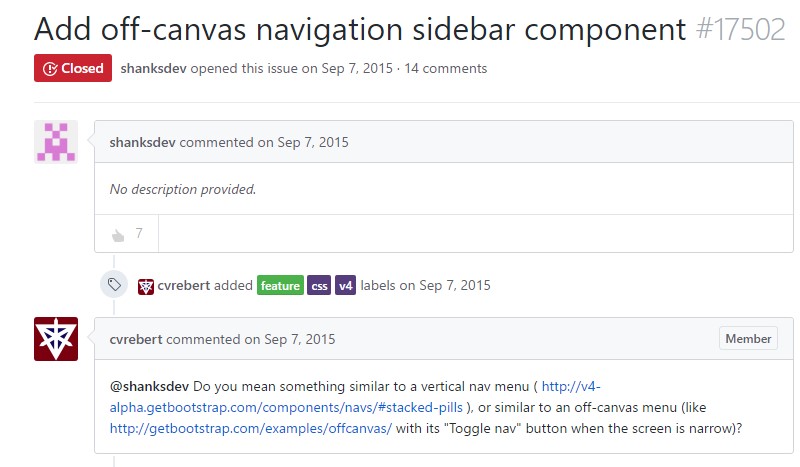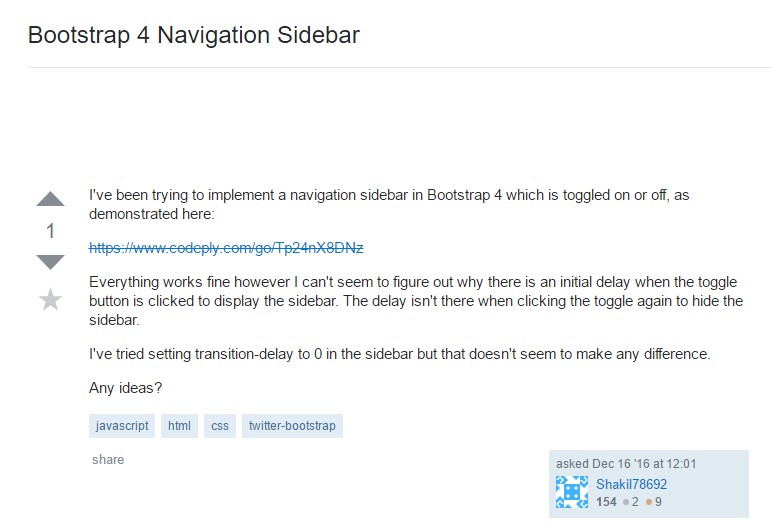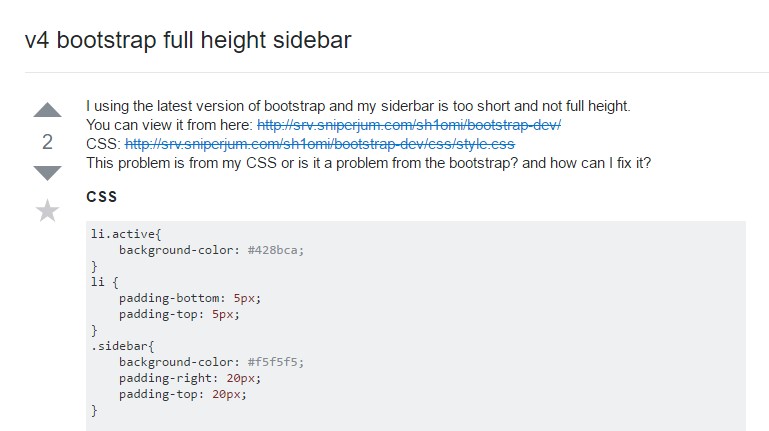Bootstrap Sidebar Menu
Intro
Inside the majority of the web pages we recently discover the content ranges from edge to edge in size with a practical site navigation bar just above and simply simply becomes resized when the defined viewport is hit so that basically the showcased web content fluently uses the entire width of the page available. Nevertheless at a specific instances the aimed goal the web pages have to serve require along with the fluently resizing material area a different section of the provided display width to get appointed to a still vertical component with certain urls and information within it-- in other words-- the popular from the past Bootstrap Sidebar Toggle is required. ( read this)
Steps to make use of the Bootstrap Sidebar Example:
This is rather old strategy however in case you truly need to-- you can easily make a sidebar element with the Bootstrap 4 framework which along with its flexible grid system also deliver a number of classes intendeded particularly for establishing a secondary level site navigation menus being simply docked around the web page.
But let us set up it simple-- through simply just nesting some rows and columns -- It is pretended this could be the easiest method. And also by nesting I indicate you can surely gave a
.rowSo let us say we wish a right straightened Bootstrap Sidebar Toggle with several web content within it and a principal page to the left of it. We must determine the grid tier down to which we desire to maintain this alignment right before the sidebar and the major web content stack around each other-- let's state-- medium and up. Therefore a possible strategy obtaining this could be this:
First we require a container element to hold the rows and columns and since we are definitely developing something a bit more challenging the
.container-fluidNext we need to have a
.row.col-md-9.col-md-3Next inside these particular columns we can easily just build some extra
.rowA handful of other tips
Additionally in case you need to create a sidebar navigation menu along with the desired
.col-*.sidebar<main>.col-*Furthermore in the event you have to produce a sidebar navigation menu along with the desired
.col-*.sidebar<main>.col-*Check out a number of online video tutorials about Bootstrap sidebar
Linked topics:
Bring in off-canvas navigation sidebar element

Stackoverflow: Bootstrap 4 Navigation Sidebar

V4 Bootstrap entire height sidebar
